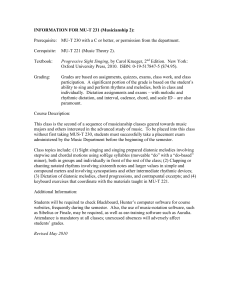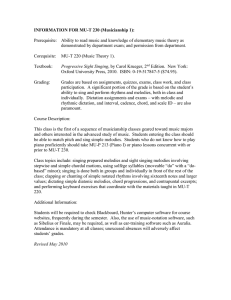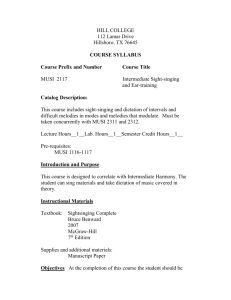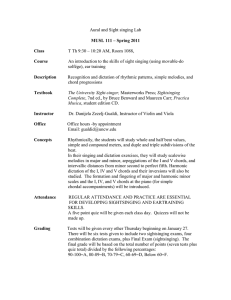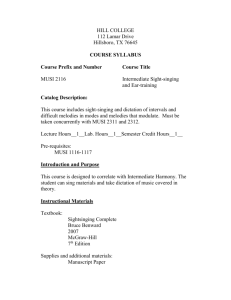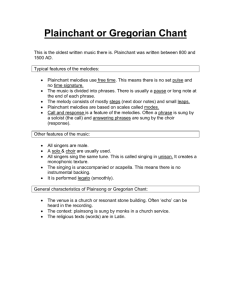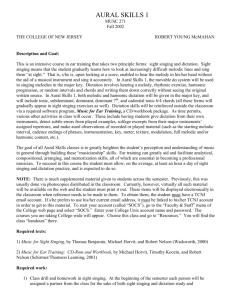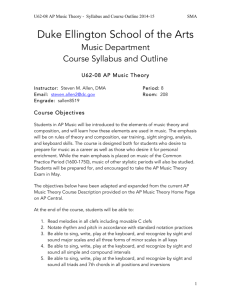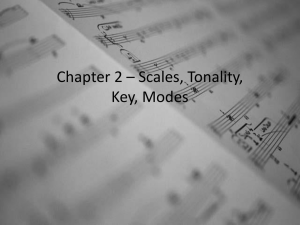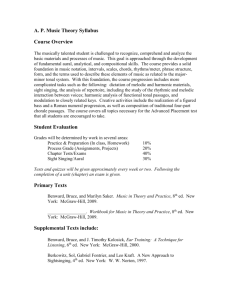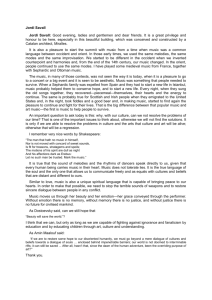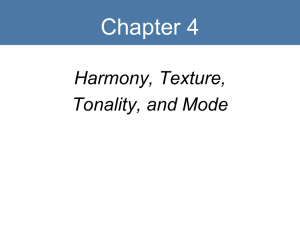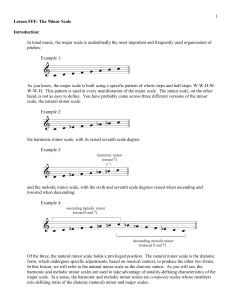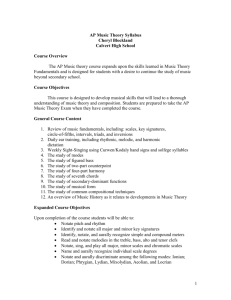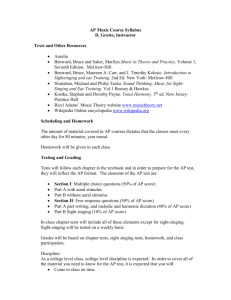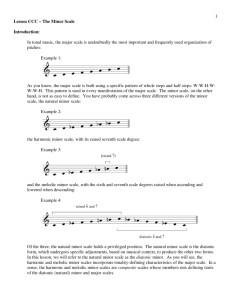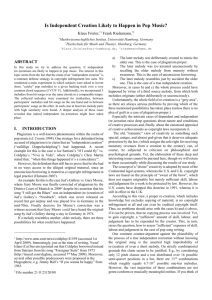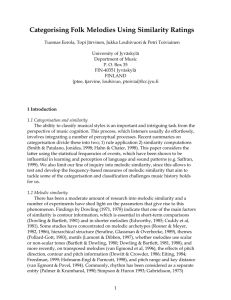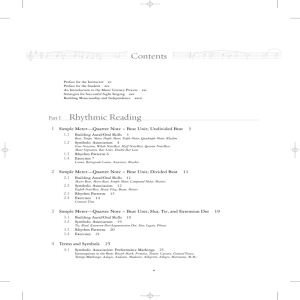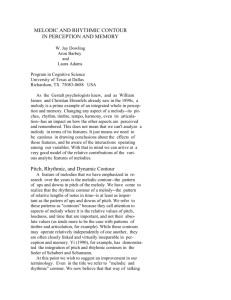MUSI 1116 - Hill College
advertisement
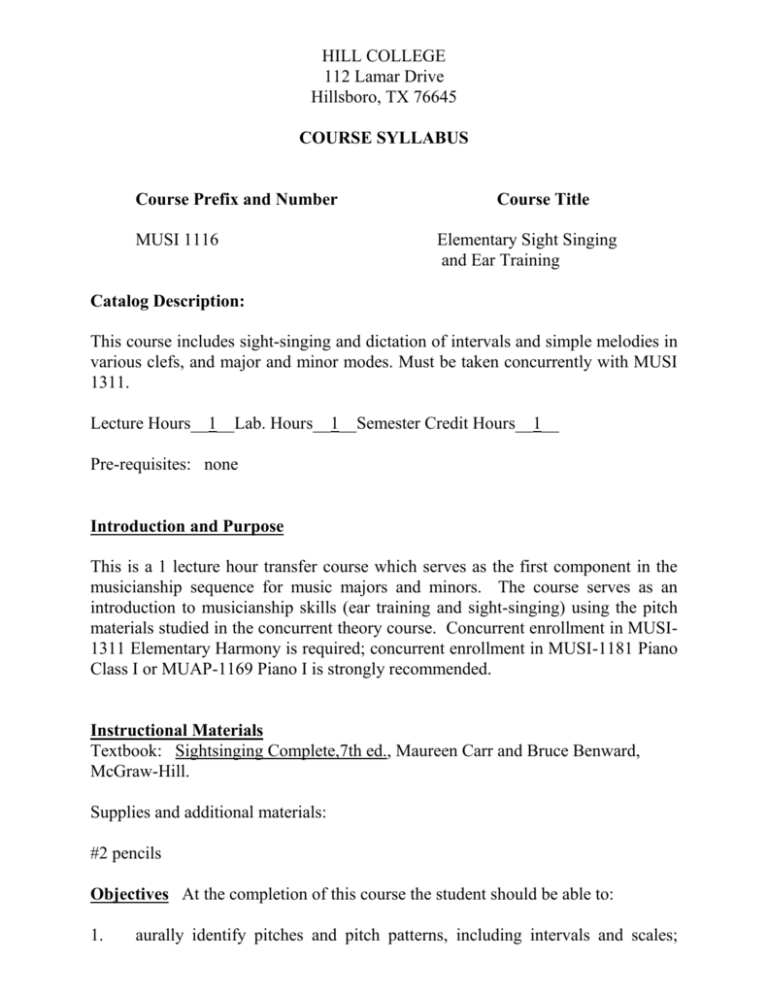
HILL COLLEGE 112 Lamar Drive Hillsboro, TX 76645 COURSE SYLLABUS Course Prefix and Number MUSI 1116 Course Title Elementary Sight Singing and Ear Training Catalog Description: This course includes sight-singing and dictation of intervals and simple melodies in various clefs, and major and minor modes. Must be taken concurrently with MUSI 1311. Lecture Hours__1__Lab. Hours__1__Semester Credit Hours__1__ Pre-requisites: none Introduction and Purpose This is a 1 lecture hour transfer course which serves as the first component in the musicianship sequence for music majors and minors. The course serves as an introduction to musicianship skills (ear training and sight-singing) using the pitch materials studied in the concurrent theory course. Concurrent enrollment in MUSI1311 Elementary Harmony is required; concurrent enrollment in MUSI-1181 Piano Class I or MUAP-1169 Piano I is strongly recommended. Instructional Materials Textbook: Sightsinging Complete,7th ed., Maureen Carr and Bruce Benward, McGraw-Hill. Supplies and additional materials: #2 pencils Objectives At the completion of this course the student should be able to: 1. aurally identify pitches and pitch patterns, including intervals and scales; components of musical time, including pulse, meter and rhythm; and diatonic harmonic constructs. 2. demonstrate this recognition through rhythmic and melodic dictation and sightsinging. 3. understand and demonstrate movable do solmization through sight-singing. Methods of Instruction 1. 2. 3. 4. listening exercises dictation exercises sight-singing exercises examinations employing these skills Methods of Evaluation 1. 2. 3. 4. Weekly Dictation and Sight Singing Assignments=50% of final grade. Midterm examination=20% of final grade. Final examination=30% of final grade. Final grade percentage breakdown: A=90-100% B=80-89% C=70-79% D=60-69% F=0-59% When computing the final grade, the lowest two weekly class grades will be dropped. Examinations will consist of dictation and sight-singing components. The Midterm and Final examinations will be comprehensive. Student honesty and attendance policies as stated in the catalog and student handbook are followed. Disabilities/ADA In accordance with the requirements of the Americans with Disabilities Act (ADA) and the regulations published by the United States Department of Justice 28 C.F.R. 35.107(a), Hill College’s designated ADA coordinator, Debra Hargrove, Associate Vice President, Human Resources and Organizational 2 Development, shall be responsible for coordinating the College’s efforts to comply with and carry out its responsibilities under ADA. Students with disabilities requiring physical, classroom, or testing accommodations should contact Melanie Betz, Director of Counseling, at (254) 659-7651 or mbetz@hillcollege.edu. Course Outline I. Unit One A. Rhythm-Simple Meter: One-, Two- and Three-Beat Values B. Diatonic Models and Melodic Fragments for Interval Singing: M2 & m2 C. Melodies (Major): M2 and m2 D. Melodies (Major): P5, P4, M3 and m3 within the Tonic Triad and M2 and m2 E. Ensembles-Two Voices: M2 and m2 II. Unit Two A. Rhythm-Compound Meter: Triple Division of the Beat B. Diatonic Models and Melodic Fragments for Interval Singing: P5, P4, M3, m3, M2 and m2 C. Melodies (Major): P5, P4, M3 and m3 within the Tonic Triad and M2 and m2 D. Melodies (Major): P5, P4, M3 and m3 within the Tonic Triad and M2 and m2 E. Ensembles-Two Voices: P5, P4, M3 and m3 within the Tonic Triad and M2 and m2 III. Midterm Examination IV. Unit Three Rhythm-Simple Meter: Duple Division of the Beat Diatonic Models and Melodic Fragments for Interval Singing: P8, P5, P4, M3, m3, M2 and m2 Melodies (Major): P5, P4, M3 and m3 within the Tonic Triad and M2 and m2 Melodies (Minor): Ensembles-Two Voices: P5, P4, M3 and m3 within the Tonic Triad and M2 and m2 A. B. C. D. E. 3 V. Unit Four A. Rhythm-Simple Meter: Quadruple Subdivision of the Beat B. Diatonic Models and Melodic Fragments for Interval Singing: m10, P8, P5, P4, M3, m3, M2 and m2 C. Melodies (Major and Minor): P5, P4, M3, m3, M2 and m2 D. Melodies (Major and Minor): P5, P4, M3, m3, M2 and m2 E. Ensembles VI. Final Examination 4
